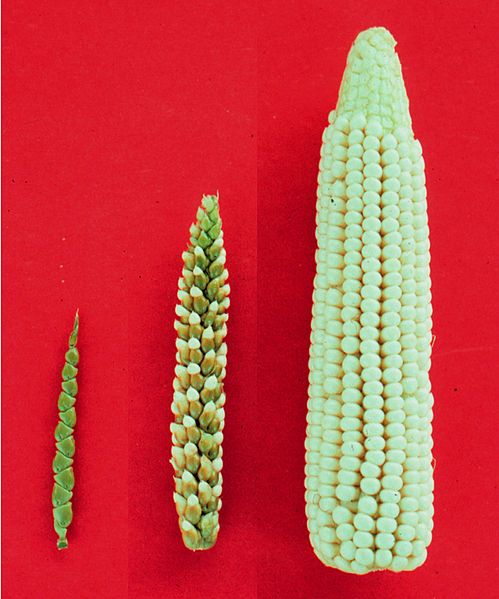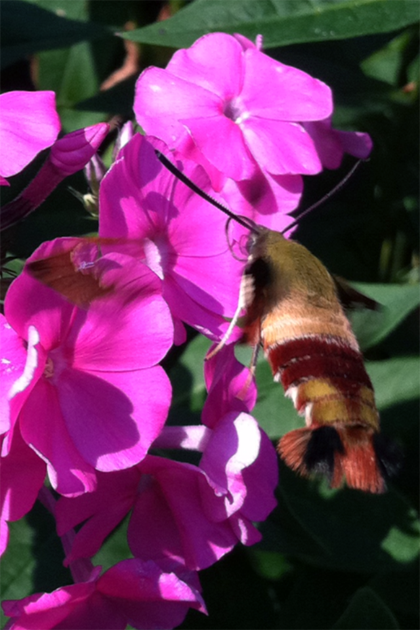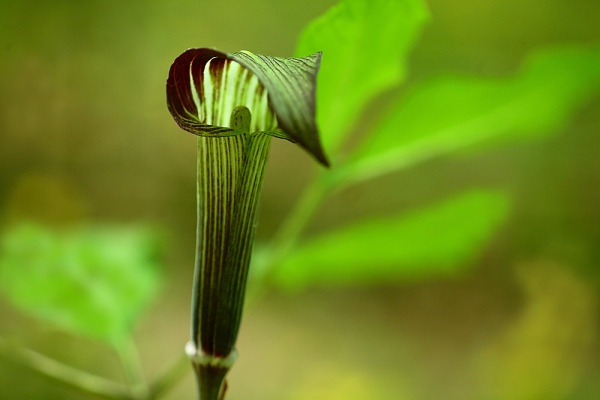Paul Magelsdorf, distinguished professor at Harvard’s Botanical Museum, stormed out on a lecture at the “Origin of Corn Conference” at U. of Illinois in 1969. He wasn’t happy, I imagine. The findings presented at this particular lecture contested much of the research he had spent his life investigating, unraveling the mystery of the origin of domestic corn. Corn’s origin was clouded in mystery because it seemed to appear out of nowhere in the fossil record with no obvious direct ancestor. In numerous papers Magelsdorf had outlined his hypothesis that corn’s ancestor was a now extinct thick seeded popcorn that gradually, through selection over many years by early inhabitants of the Americas, became the grain that we know today. Teosinte, the closest wild relative of corn, and which can be hybridized with corn, was considered by Magelsdorf to be a mutant of this same common ancestor. The fact that no intermediaries could be found between this ancient ancestor and modern day corn was troubling however.
The speaker at that conference was Hugh Iltis who contested Magelsdorf’s theory on several accounts. It was not until 1983, however, that he posed a theory of his own. This theory, which met with some skepticism at first, posed a more radical evolutionary shift – Catastrophic Sexual Transmutation. Unlike the typical Darwinian stepwise model of evolution, Iltis posed a sudden and dramatic evolutionary shift for Teosinte. To explain this I’ll start by pointing out a few differences between Teosinte and corn. First off, Teosinte is a many-branched plant with each of the primary lateral branches terminating in a male flower tassel. Corn, on the other hand, has a single stalk with the male tassels only at the top of the plant. In addition, Teosinte produces but a few, hard, kernels with nut-like casings in each of its ears, unattractive to anyone seeking food.
 Iltis hypothesized that several mutations led to a reorganization of the plant, eliminating the lateral branches, bringing the male flowers that terminated these branches tight against the stalk where they became feminized. The original female ears of Teosinte where suppressed and a grand reallocation of resources towards the new female flowers resulted in larger, and more tempting to humans, ears of corn. It was only after this catastrophic evolutionary shift that humans took over and, through selection, caused additional changes in the plant such as husking and larger grain size. In fact the sudden transmutation of Teosinte may have been lethal had not people interfered by preserving this anomaly.
Iltis hypothesized that several mutations led to a reorganization of the plant, eliminating the lateral branches, bringing the male flowers that terminated these branches tight against the stalk where they became feminized. The original female ears of Teosinte where suppressed and a grand reallocation of resources towards the new female flowers resulted in larger, and more tempting to humans, ears of corn. It was only after this catastrophic evolutionary shift that humans took over and, through selection, caused additional changes in the plant such as husking and larger grain size. In fact the sudden transmutation of Teosinte may have been lethal had not people interfered by preserving this anomaly.
Recent genetic research has found that several of the differences in morphology (branching pattern, kernel covering) between teosinte and corn are, in fact, due to minor changes in single genes. It is an important evolutionary lesson that only a small number of mutations can, at times, lead to such dramatic changes in an organism.












